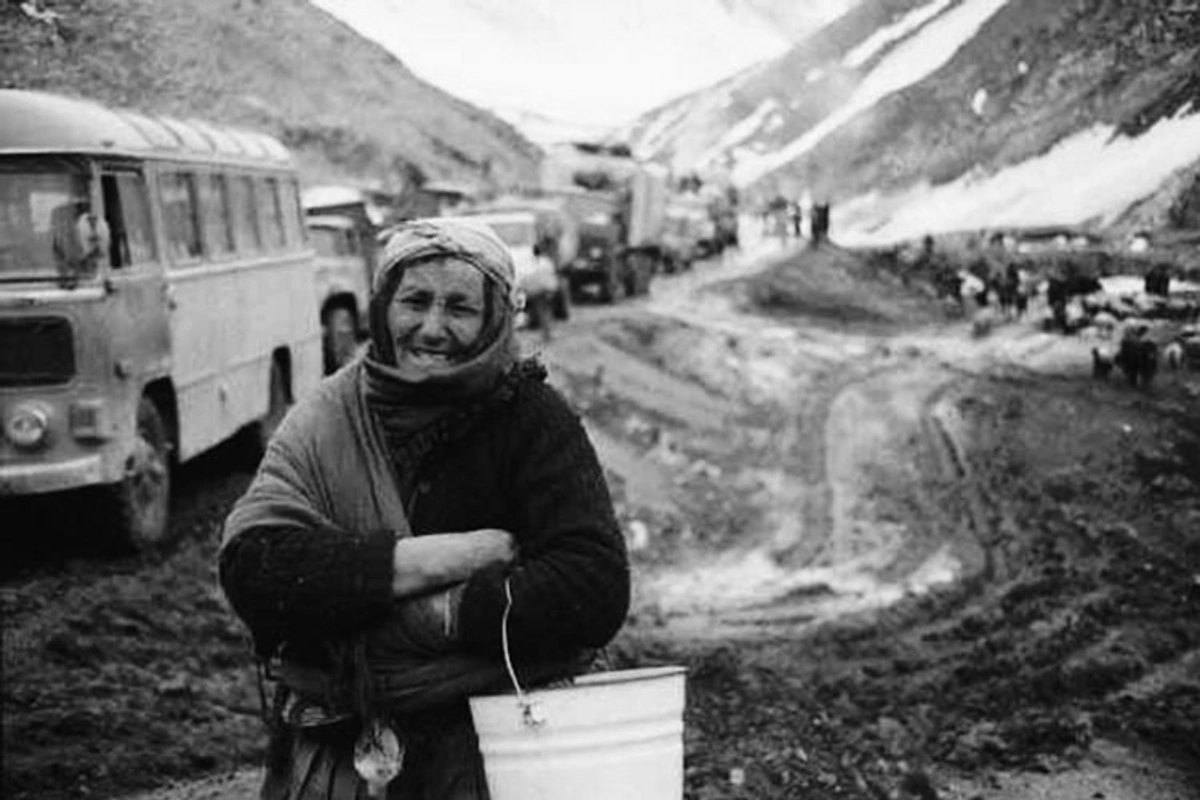
Today, on February 17, Azerbaijan commemorates 33 years since the massacre committed by Armenian armed groups against civilians in the village of Garadaghli in Khojavand district, The Caspian Post reports, citing local media.
For four years, the residents of Garadaghli bravely resisted attacks by Armenian invaders. On 17 February 1992, the village was occupied and set on fire. Armenian occupiers brutally massacred its inhabitants. This act of genocide, carried out 33 years ago against innocent Azerbaijani civilians, was the result of Armenian nationalist hatred towards Azerbaijanis.
Garadaghli village is located 13 km west of the district centre, along the Khojavand-Khankendi road, at the foothills of the mountains. In 1988, following the outbreak of the conflict in Nagorno-Karabakh instigated by Armenian separatists, the tragedy of Garadaghli began. The villagers courageously defended every inch of their homeland, with dozens of them falling in an unequal battle against heavily armed Armenian militants.
On 24 January 1990, three residents of the village were brutally murdered by Armenians at the 6th kilometre of the Khojavand-Khankendi road. On 9 January 1991, a UAZ vehicle was attacked by Armenian armed groups, resulting in one fatality and four injuries. Two of the wounded later succumbed to their injuries. On 8 March 1991, two people were gruesomely killed by Armenians near the village of Garadaghli. On 28 June 1991, six people-three men and three women-were murdered at a farm near the village. On 8 September 1991, a bus travelling from Aghdam to Garadaghli was ambushed by Armenians at the 5-6 km mark of the Khojavand-Khankendi road, killing two men and six women. On 8 January 1992, another Azerbaijani was brutally murdered near the village.
On 19 December 1991, the village of Khojavand was occupied and set on fire, followed by the same fate for the Shusha village of Malibayli on 12 February 1992. The next target was Garadaghli, where the situation deteriorated, bringing the day of tragedy ever closer.
On 14 February 1992, Armenian armed formations, with the support of the 366th Motorised Rifle Regiment stationed in Khankendi, launched an assault on Garadaghli. For four days, 104 villagers and 14 soldiers bravely resisted the attack by Armenian forces. Fourteen people, including one woman, were killed. The village’s defenders, having run out of ammunition, were ultimately captured by the Armenians.
On 17 February 1992, the village of Garadaghli was occupied and burned down by Armenian militants. A total of 118 villagers were taken hostage, and 33 were executed. The captives were subjected to inhumane torture, with Armenians carrying out horrific massacres against peaceful Azerbaijani civilians.
Armenian executioners threw the bodies of the murdered-along with the wounded who were still alive-into a silage pit near Garadaghli and buried them under the soil. The remaining captives were taken into captivity. In total, 68 prisoners perished, while 50 were rescued with great difficulty. However, 18 of them later died, unable to withstand the physical and psychological torment they had endured. The Azerbaijani prisoners suffered gruesome and barbaric acts, including beheadings, live burials, the extraction of teeth, prolonged deprivation of food and water, and beatings to death.
In Garadaghli, two families lost four members each, 43 families were left without fathers and husbands, and around 146 children became orphans. A total of 91 people were killed-every tenth resident of Garadaghli. The village suffered immense destruction, with 200 homes, a cultural centre, a school for 320 children, and a hospital with 25 beds all reduced to ruins. Approximately 800 villagers became refugees.
The tragedy of Garadaghli is often referred to as the second Khojaly. Every tenth resident of the village was killed.
To raise global awareness about the Garadaghli tragedy, the Executive Authority of the Khojavand district initiated the production of the documentary Genocide: Garadaghli in Azerbaijani, Russian, and English. Additionally, the films Genocide Garadaghli: Continues... and Garadaghli, Struggle were released in Azerbaijani, Russian, English, and French. A book titled Genocide of Garadaghli in the Accounts of Witnesses was also published. Furthermore, memorial complexes were erected in the settlements of Yeni Garadaghli, Yeni Khojavand, and the Nargiztepe area to honour the memory of the martyrs.
It is worth noting that, according to the trilateral statement signed on 10 November 2020 following the Second Karabakh War, the village of Garadaghli was within the area of responsibility of Russian peacekeeping forces. However, after localised counterterrorism operations conducted in Karabakh on 19-20 September 2023, Azerbaijan restored full control over the village.
Share on social media